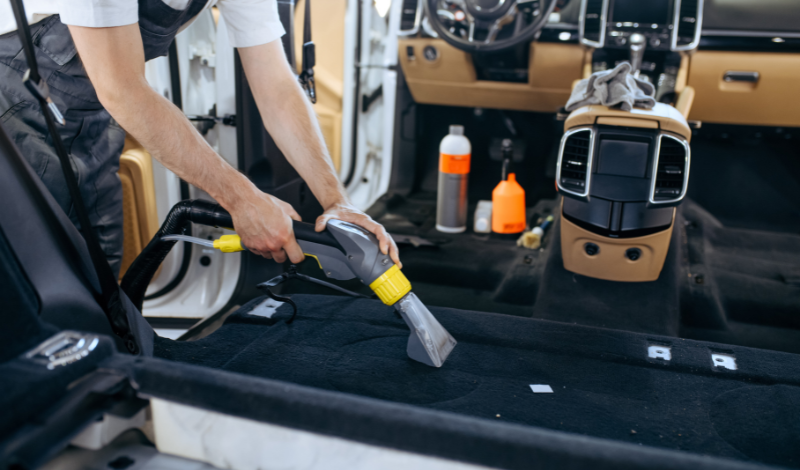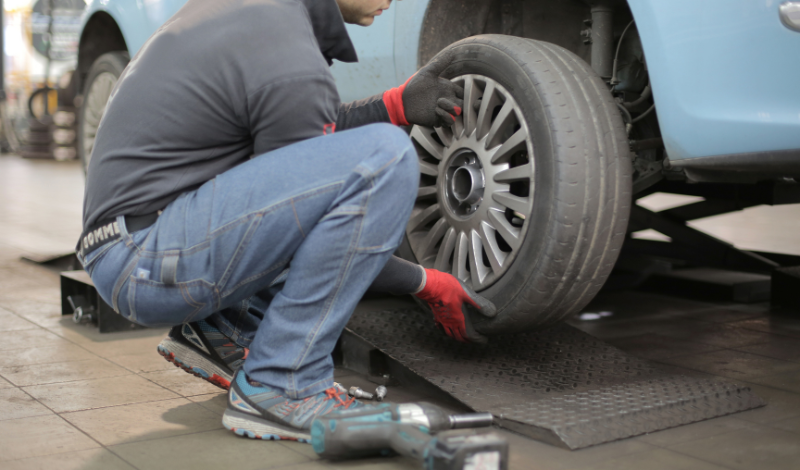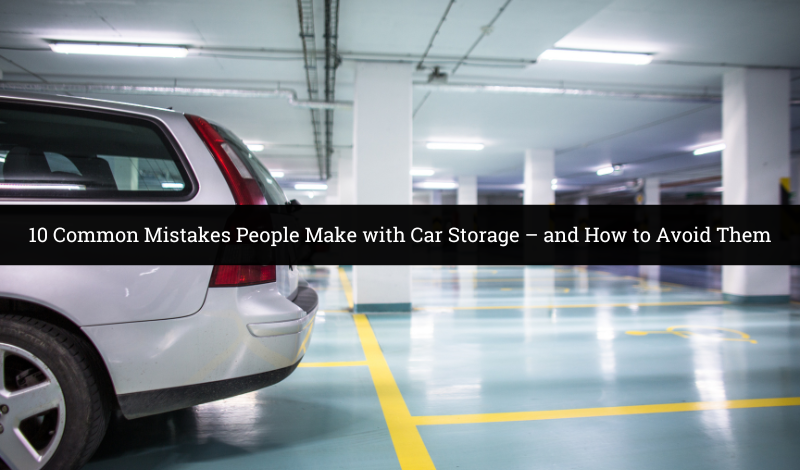Storing your car, whether for the short term or long term, can seem like a straightforward task. After all, it’s just parking your vehicle in a space where it’s safe, right? Well, not quite. There are a lot of nuances involved in storing a car properly, especially if you’re aiming to keep it in top-notch condition. Many car owners make critical mistakes that can lead to costly damage over time.
Don’t worry, though. We’re here to guide you through the common pitfalls and help you make the right choices. So, let’s delve into the 10 common mistakes people make with car storage and how you can avoid them.
1. Skipping the Car Wash
It’s tempting to believe that if your car is going into storage, a wash might be a waste of time and money. After all, it’s not like you’re showing it off to anyone, right? However, this is a misconception that could cost you in the long run. Dirt, bird droppings, and other residues can cling to your car’s surface. Left untreated, these contaminants can eat away at the paint, leading to corrosion over time.
The ideal way to avoid this mistake is simple: give your car a thorough wash before putting it into storage. Pay attention to the undercarriage and wheel wells, where grime and salt may accumulate. After washing, dry your car thoroughly to prevent water spots and apply a coat of quality wax. This extra layer not only enhances your car’s appearance but also adds a shield against potential contaminants. Properly cleaning your car before storage is an easy but crucial step in maintaining its longevity and value.
2. Ignoring the Interior Clean-Up

Leaving the interior of your car messy might seem harmless, but it’s a mistake you’ll want to avoid. It’s not just about aesthetics. Spills, crumbs, and debris can attract pests like rodents, which could then chew through important wiring or upholstery. Additionally, lingering odours can settle into your car’s fabric, making them difficult to remove later.
How to Avoid: Take the time to give your car’s interior a good clean before putting it into storage. Use a vacuum cleaner to remove dirt from carpets and seats. Wipe down the dashboard, steering wheel, and other surfaces with an appropriate cleaner. Make sure to get rid of any food wrappers, water bottles, and other waste. This not only keeps pests away but also ensures you’ll return to a clean and pleasant-smelling car when it’s time to hit the road again. Remember, a clean car interior is as important as a well-maintained exterior for long-term storage.
3. Not Protecting the Battery
One of the most overlooked aspects of car storage is battery maintenance. If you plan to store your car for an extended period, failing to protect the battery can result in a car that won’t start when you need it. A dormant battery can lose its charge over time, and in some instances, can even become damaged, thereby adding an unnecessary cost to your storage plans.
How to Avoid: The good news is that safeguarding your battery is straightforward. If you’re storing the car for more than a couple of weeks, you have two main options. First, you can simply disconnect the battery; this will prevent any drain from idle electrical components. The second option is to use a battery maintainer or trickle charger. These devices keep the battery at an optimal charge level, ensuring that it’s ready to go when you are. Either method prevents the risk of coming back to a car that won’t start due to a dead battery.
4. Overlooking Tyre Care

When it comes to storing your car, tyres often get sidelined in the planning process. Many people assume that because the car isn’t moving, the tyres don’t need any special attention. This is a significant oversight. Tyres can deflate gradually when a car sits idle for an extended period. Even worse, they can develop flat spots from the constant pressure of the car’s weight, making for a bumpy and unstable drive later on.
How to Avoid: To tackle this issue head-on, start by inflating your tyres to the manufacturer’s recommended pressure. This information can usually be found in the owner’s manual or on a sticker inside the driver’s side door. Once inflated, consider using tyre stops or blocks instead of relying solely on the parking brake. This method helps distribute the car’s weight more evenly, reducing the risk of flat spots. By giving your tyres the attention they deserve, you’ll save yourself from future headaches and potential replacement costs.
5. Using the Wrong Storage Location
Choosing the wrong location for car storage is a mistake you can’t afford to make. Many people opt for the easy way out, parking their car on the street or in an uncovered parking area. While this may be convenient, it leaves your vehicle exposed to a host of problems including weather damage, theft, and vandalism.
So, how can you avoid this?
The best solution is to choose a secure, climate-controlled storage facility. These facilities often offer 24/7 security, ensuring that your vehicle remains safe from both environmental factors and malicious intent. If a storage facility isn’t an option for you, the next best thing is to use a high-quality car cover designed to protect against UV rays, rain, and more. This may not offer as comprehensive protection as a storage facility, but it’s certainly better than leaving your car fully exposed to the elements and potential risks.
In short, never underestimate the importance of the right storage location for your car. Make the smart choice; your car will thank you for it.
6. Leaving the Windows Rolled Down
You might think that leaving your car windows slightly open is a good idea, especially if you believe it aids in air circulation. It’s a common misconception and one that can lead to issues down the line. Open windows invite unwanted guests—moisture and pests. Let’s be clear: moisture is a car’s enemy. It can result in mould, mildew, and even rust over time. Similarly, open windows can serve as an entry point for rodents or insects, which can damage your upholstery or even chew through wires.
How to Avoid: The solution here is straightforward. Ensure all windows and sunroofs are fully closed. If you’re concerned about air circulation, there are products designed to maintain a moisture-free environment inside your vehicle. Silica gel packs or moisture absorbers can be placed inside to help keep things dry. By taking these simple precautions, you safeguard your car’s interior from both dampness and unwelcome critters.
7. Neglecting Fluids
You might think that if you’re not using your car, the fluids inside it don’t matter. But that’s a misconception that can cost you in the long run. The various fluids in your vehicle, including oil, brake fluid, and coolant, all play vital roles in its functioning. Over time, these can degrade or evaporate, leading to potential mechanical problems. For instance, old oil can turn into sludge, affecting your engine’s performance, while low brake fluid levels can compromise your car’s safety.
How to Avoid: Before you put your car into storage, do a thorough check of all fluid levels. Make sure you top off or replace fluids as needed. If you’re storing your car for an extended period, it’s advisable to use long-life antifreeze and synthetic oil, as these tend to have a longer shelf life compared to their traditional counterparts. Taking care of the fluids is a simple step, but it can make a world of difference in preserving your car’s condition.
8. Forgetting to Block Pests
The last thing you want when storing your car is a surprise visit from rodents or insects. These unwelcome guests can chew through wires, make nests in your engine, and even damage upholstery. In short, they can turn your prized vehicle into a costly mess. Unfortunately, the warmth and shelter of a stationary car can be incredibly inviting to pests, especially during colder months.
How to Avoid: To keep your car a no-go zone for these critters, consider placing mothballs or cotton balls soaked in peppermint oil in strategic areas around your vehicle. These scents act as natural repellents. Additionally, make sure to block any potential entrances, such as exhaust pipes or air intake vents, with steel wool or aluminium foil. The aim is to make your car as inhospitable as possible for any animal looking for a new home.
By paying attention to this often-overlooked aspect of car storage, you safeguard not just your vehicle’s functionality, but also maintain its long-term value.
9. Not Preparing for the Weather
Many people overlook the impact of weather when storing their car, thinking a roof over the vehicle is protection enough. However, changes in temperature and humidity can take a toll on different components, from the engine to the upholstery. Cold can make your oil thick and viscous, while excessive heat can cause tyre pressure to increase.
How to Avoid: Firstly, think about where you’re storing the car. A climate-controlled storage facility is ideal. If that’s not possible, heavy-duty, weather-resistant car covers can provide a level of protection. Secondly, adapt your vehicle to the weather. For example, use winter-grade oil if you’re storing your car during the cold months, and ensure your antifreeze mixture is appropriate. Check your tyre pressure regularly and adjust according to the season. By preparing your vehicle to withstand seasonal changes, you’re one step closer to ensuring its long-term health.
10. Not Running the Car Periodically
When it comes to long-term car storage, one of the biggest mistakes you can make is simply parking the vehicle and forgetting about it. Doing so can lead to a host of issues, such as a dead battery, stale fuel, and components like seals and gaskets drying out. Over time, these neglected aspects can coalesce into a much bigger problem, potentially causing your vehicle to not start when you need it to.
How to Avoid: The solution here is pretty straightforward but crucial—make sure the car gets some exercise. Ideally, have someone start the car every two weeks, allowing it to run for at least 15 minutes. This revs up the battery, ensures that fluids circulate through the system, and helps prevent any moisture build-up. If possible, take the car for a short drive to engage the transmission and brakes. Doing so keeps the engine and other mechanical parts lubricated, making sure your car is road-ready whenever you decide to use it again.
By committing to this simple routine, you can stave off the detrimental effects of long-term storage. Keeping your car in running condition is not just good practice; it’s a smart way to prolong its life and performance.
Conclusion
Storing your car isn’t as simple as just parking it and walking away. There are many factors to consider, especially if you want your car to be in the same condition when you return as it was when you left it. By taking proactive steps and avoiding these common mistakes, you can ensure that your car remains in excellent condition, ready to hit the road when you are.

